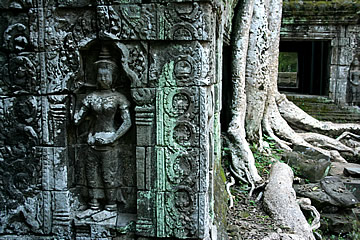


Ta Prohm at dawn was magical.

Ta Prohm at dawn - magical.
The temple, consecrated in 1186, was originally called Rajavihara, the royal monastery, dedicated to the king's mother in the form of Prajnaparamita, goddess of wisdom, by King Jayavarman VII. Over twelve thousand people lived at the temple site which stretched over 148 acres, the centrepiece of reconstruction after devastating wars.1
It lies to the north of Siem Reap, east of Angkor Thom. We set off at 5:15 a.m. to make sure we were there for the dawn. It was pitch black when we arrived, our driver angled the car headlights so we could see the entrance and our guide led us in.

We waited for the dawn inside the temple ruins.
There was maybe half a dozen people there when we arrived.
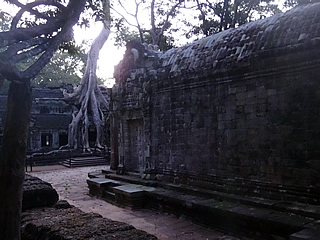
Our guide picked a spot within a small ruined courtyard inside the east gopura of the fourth enclosure where huge tree roots clung to the walls. Here there was nobody else, though the calls of gibbons, cicadas, parrots and the odd rooster were an atmospheric backdrop - as the dawn approached it got progressively louder.
We stayed at this spot until it got light enough to see our way easily around the ruins - it really was a magical experience.
We had entered by the east gopura (gateway) of the fourth enclosure. There is a further enclosure surrounding this one, though at some distance. Within are the third, second and first enclosures, approaching the central temple.
Rather than the temple mountain layout of a series of concentric rising levels, Ta Prohm is of a later style, laid out on a flat plane within a series of concentric enclosures.2

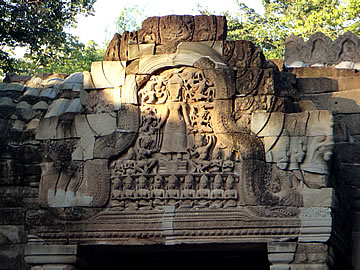
Opposite the east gopura is the so-called "Hall of the Dancers". Measuring 20m by 36m it is not possible to go inside; the interior was once supported by 96 columns.1

Continuing to head west, behind the "Hall of the Dancers" is the east gopura of the third enclosure.
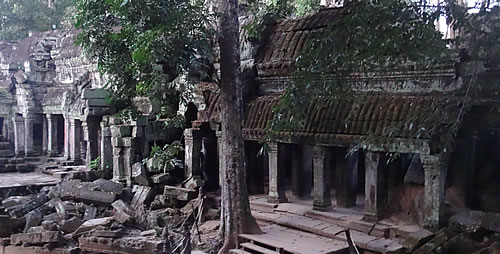












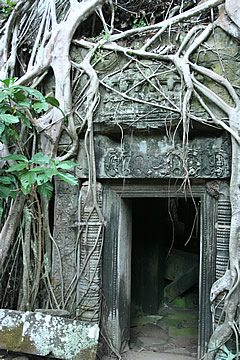





Ta Prohm can best be described as in a state of managed ruin, it makes for an incredibly atmospheric site, especially when there is no-one else there!
The trees are quite phenomenal. The kapok roots are massive, slowly crushing the buildings. The strangler figs look altogether more vicious, smothering the buildings - as well as any other trees - in a fine network of roots.

The first enclosure surrounds the inner temple. Here the ruins verge on the truly fantastic, with a huge strangler fig sprawling over the buildings and some well-preserved carvings.

The second enclosure wall has an interior gallery supported by square columns, similar to the exterior gallery of the third enclosure.
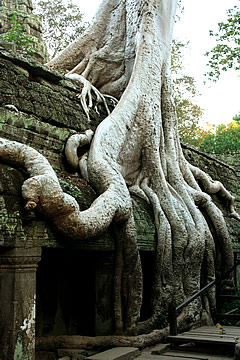

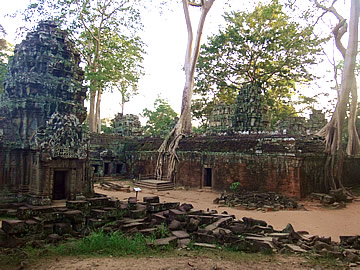








Having thoroughly explored the temple we made our way back to the east gopura of the fourth enclosure and the courtyard where we had waited for the dawn. There were still very few people at the ruins.

It was still dim in the courtyard, it would be some time before the sun would be high enough to light up the interior of Ta Prohm.
